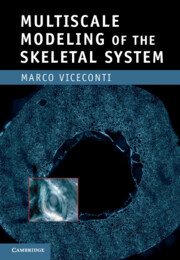3 - The body level
Published online by Cambridge University Press: 05 January 2012
Summary
A description of the anatomy and the physiology of the neuromusculoskeletal system, and the methods used to model the musculoskeletal dynamics, in particular to predict the muscle and joint forces acting on the skeleton during a given movement.
Introduction
The musculoskeletal apparatus is an organ system whose main functions are the support of the body, the provision of motion, and the protection of vital organs. During these functions bones are subjected to considerable internal forces, transmitted primarily by the muscles and the joints, and to external forces transmitted through the skin and the other connective tissues. Thus, to determine the forces acting on the skeleton we need to investigate how the whole neuromuscular apparatus works during physiological and para-physiological activity. This can be done by modeling the whole body during these movements, with methods that help us to estimate which forces are transmitted to the skeleton instant by instant. The scope of this chapter is to describe these whole-body modeling methods.
Descriptive anatomy
This book is intended for practitioners of musculoskeletal biomechanics; nevertheless, in this and in the following sections I shall review some functional anatomy, physiology, and biology, to ensure a common background and a common terminology.
- Type
- Chapter
- Information
- Multiscale Modeling of the Skeletal System , pp. 47 - 76Publisher: Cambridge University PressPrint publication year: 2011



